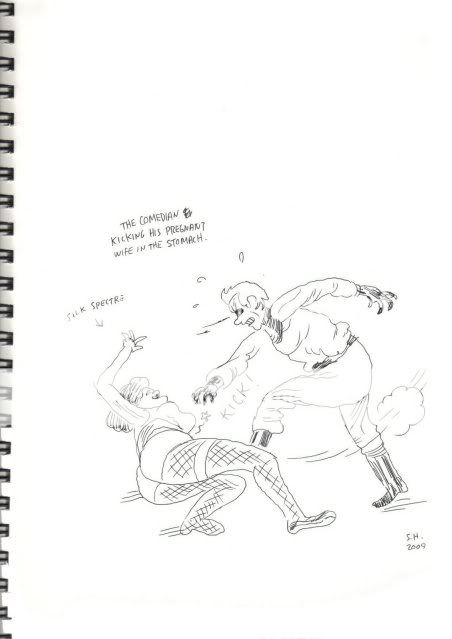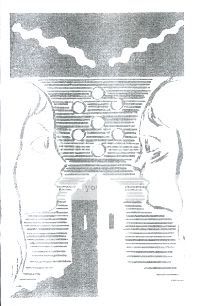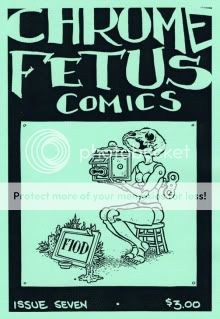Hilariously true to his loveable-curmudgeon rep, Tom Spurgeon offers four reasons why successful comic cons aren’t necessarily good for comics. Going point by point:
1) “A successful convention rarely leads to increased industry success because the infrastructure is damaged in fundamental ways — or has a hitch step — that keeps this from happening.”
Tom’s right that the San Diego Comic-Con offers an ability to put comics-friendly asses in seats, to make mainstream-media waves, and to provide people with an enjoyable experience that runs the gamut of comics as both an art form and a cultural phenomenon, that is not just unequalled but completely unapproached by the comics industry and its organs for the other 51 weeks of the year. This isn’t really a criticism of cons, and actually Tom’s not really phrasing it as such. But there’s not much to disagree with there, either in general or in the specific areas in need of improvement that Tom cites.
That said, this is just one thing I’m focusing on out of many that I totally agree with, but I think Tom curiously downplays the ability of online retail to compensate for the lack of a real, durable, nationwide, catholic comics retail infrastructure. To cite a similar case, it’s a shame that there are entire regions of the country where the only record store around is the odiously censorious Wal-Mart, but assuming people in those regions have an internet connection, or a library card that gives them access to that library’s internet connection, they actually have better access to every piece of music in the world than I did back in 1994 when I could roll into Halo Zero and pick up whatever KMFDM singles they happened to have in stock. By that same token, it’d be nice if everyone had a Jim Hanley’s or a Comix Experience or a Beguiling within biking distance, but everyone does have an Amazon.com. Perhaps I lack the nostalgia gene for the ideal comics shop experience–I loved my local shop when I was buying supercomics in high school, and they steered me to things like Sin City which was nice, but I don’t remember seeing much Love & Rockets there. But I think the new generation of potential comics readers is going to be accustomed to shopping online anyway. Are we losing something that could be provided by a vibrant Direct Market rather than the two-publisher tango we have now in all but a handful of stores? Absolutely, the same way we lost a lot when mom-and-pop video stores staffed by knowledgeable movie buffs were destroyed by Blockbuster–only in comics’ case, there’s no Blockbuster either! In terms of developing lifelong consumers of comics, I’d imagine that even Amazon’s best sales and marketing program isn’t worth one Chris Butcher or Brian Hibbs or Vito Delsante. But I wouldn’t simply consign “shopping online” to a list of things people are unfortunately forced to do because of the inadequacy of America’s Android’s Dungeons. Online is a vibrant market of its own. And as digital comics increase in prominence, that market will only grow more robust.
2) “Conventions are growing in popularity not because of their subject matter but because of the intensified nature of social interaction with the advent of on-line communication.”
Well, yeah, but since that social interaction stems from a shared love of comics, isn’t it kind of six one way, half a dozen the other? Also, hasn’t the purpose of cons always been social interaction with your fellow travelers? Perhaps what Tom’s saying is that if you come to Comic-Con with “I can’t wait to hang out with my friends I never get to see anywhere else” as your priority, your dollars are more likely to be spent at Dick’s Last Resort than at Comic Relief, your time more likely to be passed at Jeff Katz’s party than at Lewis Trondheim’s panel. I’m not sure if I’m 100% persuaded of that. Every year I’ve gone, I’ve spent plenty of time and money on both.
I do appreciate Tom’s call for a more curated, festival-style approach to be incorporated into the big shows, however. Obviously there’s an effort made along those lines at the small-press shows, while I think Dustin Harbin’s altcomix outreach at Heroes Con 2008 might well have qualified in terms of the mainstreamy mid-level shows. On the other hand, you can obviously write off all the cons run by the Shamus Brothers and their current and former associates. For all intents and purposes that leaves the shows run by the Comic-Con organization and Reed, and you know what? I think there’s potential for both if someone seizes the initiative and works his or her ass off for a festival component. That’s really worth thinking about.
3) “The more successful a convention becomes, the more it may preach to the choir.”
Last year, pre-Twitter (or at least pre-me-on-Twitter), I would have agreed to this without hesitation. 2008’s five-day sell-out and dire hotel-vacancy situation indicated that in the future, the only people who could rely on even getting into the Con at all were the people who knew enough about it and were sufficiently motivated about it to buy tickets weeks, even months, in advance.
This year, though, clicking on the Comic-Con trend tag on Twitter revealed tons and tons of “civilians” who seem even more interested in Comic-Con now that it’s become a Cannes-style phenomenon. Obviously we’re probably mostly talking about people who are interested in the Hollywood component of the show rather than checking out what Boom or Buenaventura have at their booths, but at the very least the awareness of the show is at an all-time high.
Whether that will translate into non-lifers buying their passes in March or whenever it is they go on sale is another issue. The show, and comics as an entity, probably ought to try to ensure that they will. Perhaps the show could reserve a sizable block of tickets for day-of purchases, or at least for advance purchases that are nevertheless within a reasonable time frame for non-nerd awareness of the show to peak.
To back Spurge up wholeheartedly, though, there’s Eric Reynolds’s sobering con report. Eric explicitly states that the increased attention to the Hollywood component of the con is both keeping people who might be interested in the small press’s wares away from the show altogether, and preventing those who are at the show from using their time to do anything but wait in line for and attend Hollywood panels, thus leading to a surprising and shocking sales drop-off on Saturday–once the busiest sales day of the show by a country mile, it’s now seeing the merchants crushed by competition with the big-ticket studio and network presentations. I know that by “festival component” Tom means an arts-celebrating aspect of the show divorced from mercantile concerns, but I can’t help but feel that the former would help the latter here.
4) A flea market is still an odd way to meet the world.
That’s true. It IS weird going up to heroes like, I dunno, Los Bros Hernandez, people who you just wanna shake hands with and say hello to and stand in awe of, all the while cognizant of the nearby pile of their books and employees (or even the creators themselves!) ready to take your cash in exchange for those books. Then again, with the exception of that country music Fan Fest, is there any other art form in the world that provides this level of access to the giants of the field? I’ve long said that going to a small-press show in particular is a bit like going to a family reunion where every time you end up making smalltalk with a distant cousin, you have to pay him five bucks for his minicomic, but to me that awkwardness is a small price to pay to be able to get a Seth sketch of David Bowie for free.
Still, this is entirely unobjectionable and admirable:
The only thing I might suggest is that the wider culture and industry entire make it a goal at their major shows that the experience be worth having if not a single dime is spent on purchasing anything once within the walls — paying close attention to programming, bringing in more festival aspects, having focused signings that aren’t in a commercial context and may even feature giveaways.
It’s important to remember that Tom isn’t one to pronounce Comic-Con “nerd Altamont,” nor share in Chuck Rozanski’s annual obituaries for the event, nor kvetch about how Comic-Con is a misnomer due to the presence of Twilight or Lost. Just take a look at his regular con report, where he trumpets the various extremely comics-y news stories that broke at the show (from Nancy to Parker to Wilson to Marvelman to Bone) and rightly points out that if you have a mind to do so, you can have an absolutely kickass comics experience with minimal effort. Somewhere between cheerleading and doomsaying lie the posts and policy prescriptions we’d do well to take heed of.












